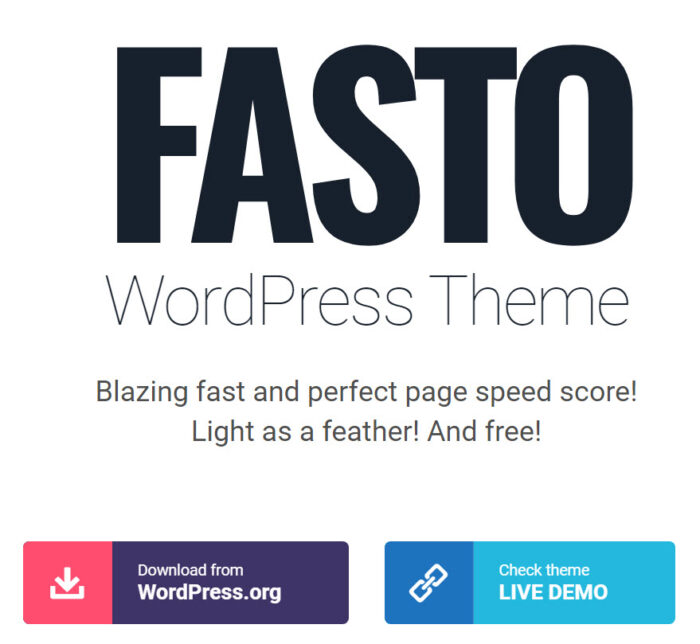Crafting a powerful online presence can be a daunting task for any small business owner. Thankfully, with WordPress, it doesn’t have to be. WordPress offers a host of customizable features that can help your website reflect your unique brand identity and resonate with your target audience. From typography to color schemes, let’s delve into the nuances of WordPress customization and look at a few industry-specific examples.
Know Your Business, Know Your Brand
Before you start the design process, understanding your business inside and out is vital. Your website should effectively reflect your brand’s values, target audience, and industry. Knowing these will guide your decisions about visual aesthetics, including color palettes, typography, and imagery.
Choosing the Right Theme
WordPress has a vast array of themes designed for different business types. These themes offer built-in layouts and design elements that match your industry’s style. For instance, if you run a restaurant, you might consider a theme like Rosa. This theme emphasizes vibrant images, intuitive menu design, and easy-to-navigate reservation systems.
Nailing the Color Palette
Colors influence emotions, and in turn, customer behavior. A thoughtfully chosen color palette will evoke the right feelings in your website visitors.
Restaurants can benefit from warm, appetizing colors like reds and oranges. Check out The Melting Pot website to see how they’ve done it.
Fitness centers could opt for bold, energetic colors like red and black. Have a look at Gymshark for some design inspiration.
Creative agencies often prefer modern, sleek color schemes such as black, white, and vibrant accent colors. Check out how FCINQ plays with color in their web design.
Choosing the Right Typography
Just like colors, the fonts you choose also carry emotional weight. Serif fonts, for instance, are seen as more formal and traditional, while sans-serif fonts are modern and approachable.
Legal firms often use serif fonts for their connotations of respectability and trust. White & Case, a well-known law firm, is a great example.
Marketing agencies often lean towards sans-serif fonts for their modern and dynamic feel. Check out VMLY&R for inspiration.
Online stores tend to use fonts that are easy to read and friendly. Look at Amazon and see how simplicity in typography enhances user experience.
Making the Most of Images and Icons
Well-chosen images and icons can tell a story about your business without words.
Travel agencies often use high-quality images showcasing exotic destinations. For instance, Booking.com leverages striking visuals to entice travelers.
Tech startups might prefer a minimalist approach with more icons and less text. Airbnb, for example, uses familiar icons to aid navigation.
Education institutions often use images of students, classrooms, and campuses to create a sense of community. Harvard University’s website illustrates this perfectly.
Responsive and Mobile-friendly Design
In our mobile-driven world, your website needs to look good and function well on all devices. Choose a responsive WordPress theme and always check your site’s look and performance on various screen sizes.
In Conclusion
Designing a website for your small business is a significant step in your marketing strategy. With WordPress, you have all the tools at your fingertips to create a site that not only looks good but also resonates with your target audience. Remember, the best websites are those that manage to harmonize brand identity, industry norms, and unique aesthetics. Happy designing!
Logo Design: The Face of Your Brand
A logo is much more than a simple graphic; it’s the face of your company, a visual representation of your brand’s values and personality. It should be distinctive, memorable, and easily recognizable.
Choosing the right logo for your small business is a critical step in your branding strategy. It should be a design that can be effectively used in different contexts – from your website and social media profiles to business cards and promotional materials.
Tips for Designing a Great Logo
- Simplicity: The best logos are usually simple and uncluttered. They’re easy to recognize at a glance and remember.
- Versatility: Your logo should look good whether it’s printed on a business card or displayed on a giant billboard. It also needs to work in black and white as well as color.
- Relevance: A great logo communicates something about the business. For example, a bakery might opt for a logo featuring a loaf of bread, or a web design company might choose a logo with a stylized “W”.
Where to Get a Logo Design
If you’re not a design whizz yourself, don’t worry! There are numerous resources available for small business owners to get a logo design.
- Hire a Professional Designer or Agency: If you have the budget, hiring a professional logo designer or a design agency is a good option. They have the expertise to craft a logo that aligns with your business values and goals. Check out design platforms like 99designs or Behance where you can browse portfolios and find a designer whose style you like.
- Crowdsourcing: Platforms like DesignCrowd allow you to run a logo design contest. You provide a brief, and then designers from around the world can submit their designs. You only pay for the one you like best.
- Online Logo Makers: If you’re on a tight budget, online logo makers could be the way to go. Tools like Canva, LogoMaker, and Looka offer easy-to-use interfaces where you can create a logo from customizable templates. However, bear in mind that using a logo maker might not give you as unique or customized a result as working with a professional designer.
Remember, your logo is an integral part of your brand identity. Spend time on this process, and make sure you get a logo that perfectly represents your business.
Common Amateur WordPress Mistakes That Could Cost Your Small Business Money
Running a small business is no small feat, and when it comes to managing your WordPress website, it’s easy to fall into some common pitfalls. These errors can lead to lost sales, lower search engine rankings, and a frustrating user experience. Let’s dive into some common mistakes you should avoid:
1. Choosing the Wrong Theme:
Choosing a theme merely based on its visual appeal is a mistake. Some themes may look pretty but are bloated with unnecessary features, resulting in slow page loading times. Slow websites drive away visitors and negatively impact your SEO rankings. Always go for a theme optimized for performance, like Astra, GeneratePress or OceanWP.
2. Ignoring Website Updates:
WordPress, plugins, and themes are regularly updated for security reasons and to add new features. Ignoring these updates can make your website susceptible to security breaches and compatibility issues. Always ensure you have the latest versions installed.
3. Not Using a Child Theme:
When you customize a theme directly and then update it, you’ll lose all your modifications. Using a child theme ensures that your changes are preserved when the parent theme gets updated.
4. Neglecting SEO:
Not optimizing your WordPress site for search engines is a costly mistake. Poor SEO practices can result in lower visibility on search engines and decreased traffic. Install an SEO plugin like Yoast SEO or Rank Math to assist with this.
5. Forgetting to Install a Caching Plugin:
Caching plugins significantly improve your site speed, enhancing user experience and SEO rankings. Plugins like WP Super Cache or W3 Total Cache are excellent choices.
6. Overlooking Mobile Responsiveness:
In our mobile-centric world, failing to ensure your site is mobile-friendly can drive away a significant portion of your audience. Test your site on different devices to ensure it’s responsive, and if it’s not, consider a redesign or switch to a responsive theme.
7. Not Backing Up Your Website:
Imagine losing all your website content due to a hacker attack or a server failure! Regular backups are a must to avoid such disasters. Use plugins like UpdraftPlus or BackupBuddy for this purpose.
Avoiding these common mistakes can save you from a lot of stress and financial losses. Take your time with your WordPress site – a well-designed and well-maintained site can be a significant asset to your small business.
PS check out our step-by-step WordPress guide!
This reminds me of the time I was helping my good friend, Jake, with his small restaurant business. Jake is a fantastic chef, but when it came to the digital world, he was like a fish out of water. I convinced him to use WordPress for his restaurant website. He loved the idea and jumped right in, but without considering my advice, he fell into the same common pitfalls I just outlined above.
One day, Jake called me frantically. He was panicking because his website had crashed right before the weekend rush, the busiest time for his business. He’d chosen a visually stunning theme, overloaded with features he didn’t need. In his enthusiasm to post eye-catching pictures of his gourmet dishes, he had ignored the theme updates. And now, his website was down due to compatibility issues.
He also admitted he hadn’t installed any SEO plugins, leaving his website virtually invisible in search engine rankings. But what struck me as the funniest was that he hadn’t bothered to check his website on his mobile phone. He was shocked when I showed him how distorted and disorganized it looked on smaller screens.
I couldn’t help but chuckle at Jake’s predicament. Of course, I helped him out, we spent the weekend correcting all the issues. Jake learned the hard way that managing a WordPress site required more than just choosing a pretty theme and uploading photos. It was a rigorous process of regular updates, SEO optimization, ensuring mobile responsiveness, and most importantly, regular backups, which Jake had completely overlooked.
So, take it from Jake’s experience – avoid these amateur mistakes. His restaurant is thriving now, both offline and online, and he’s become quite the WordPress enthusiast. He often jokes that if the chef gig doesn’t work out, he might just switch to website design. Let’s just say I won’t let him design my website anytime soon!






No Comments